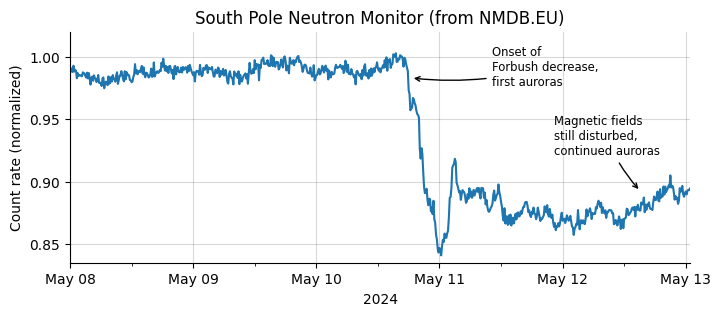One way to estimate the likelyhood of auroras is to look at the cosmic radiation on Earth. There are plenty of neutron monitors worldwide which count the number of cosmic particles and provide near-real time data on nmdb.eu.

At the start of last weekend, we saw the number cosmic particles going down ~15%. This was caused by a solar plasma cloud ejected from the sun which, once near Earth, shields away galactic particles with its magnetic fields. The corresponding drop of the count rate on Earth is called "Forbush Decrease", which usually restores during 1-3 days while the plasma cloud passes the Earth.
Since the plasma is causing auroras on Earth, we can often see strong and low-latitude auroras during these solar events.
This time, we are experiencing an extraordinary plasma cloud from the sun. The drop has not been significantly restored for more than 48 hours. This shows that the plasma cloud might be huge and is still present in the vicinity of Earth. This time, it takes extremely long for the cloud to pass by. A truely unusual event!
As you can watch the neutron monitor data live, you can make a good guess from the data whether auroras could be expected. Since the count rates are still extremely low, it would take several more days for it to fully restore. Hence, we will probably see auroras in the next nights, too. Good luck!

